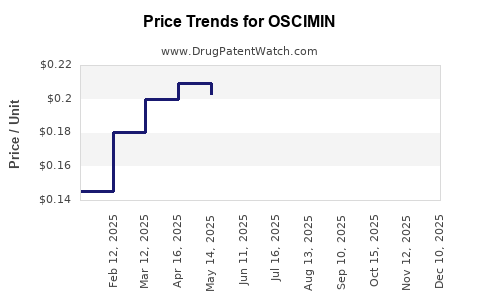Drug Price Trends for OSCIMIN
✉ Email this page to a colleague

Average Pharmacy Cost for OSCIMIN
| Drug Name | NDC | Price/Unit ($) | Unit | Date |
|---|---|---|---|---|
| OSCIMIN 0.125 MG TABLET | 68047-0252-01 | 0.09933 | EACH | 2024-11-20 |
| OSCIMIN SL 0.125 MG TABLET | 68047-0253-01 | 0.14788 | EACH | 2024-11-20 |
| OSCIMIN 0.125 MG TABLET | 68047-0252-01 | 0.18013 | EACH | 2024-10-23 |
| OSCIMIN SL 0.125 MG TABLET | 68047-0253-01 | 0.20400 | EACH | 2024-10-23 |
| OSCIMIN 0.125 MG TABLET | 68047-0252-01 | 0.18975 | EACH | 2024-09-18 |
| OSCIMIN SL 0.125 MG TABLET | 68047-0253-01 | 0.21111 | EACH | 2024-09-18 |
| OSCIMIN 0.125 MG TABLET | 68047-0252-01 | 0.18785 | EACH | 2024-08-21 |
| >Drug Name | >NDC | >Price/Unit ($) | >Unit | >Date |


